This M.Zuiko 150-600 hands-on review is the culmination of capturing a few thousand images with this lens over the past couple of months. And, writing a series of articles about my experiences. A summary of those articles, with accompanying links, is provided at the end of this extensive posting.
NOTE: Click on images to enlarge.

The only thing that has ever been important to me in terms of my photography gear is how it performs out in the field, in real-life conditions. Over the years I’ve never bought a lens… or not bought a lens… because of detailed lab testing.

Given the incredible power of new AI based photographic software I question whether any of these labs tests actually deliver meaningful value when typical photographers are assessing lenses. It is pretty common now for software programs like DxO PhotoLab to automatically make adjustments as soon as a RAW file is opened to help correct potential optical issues.
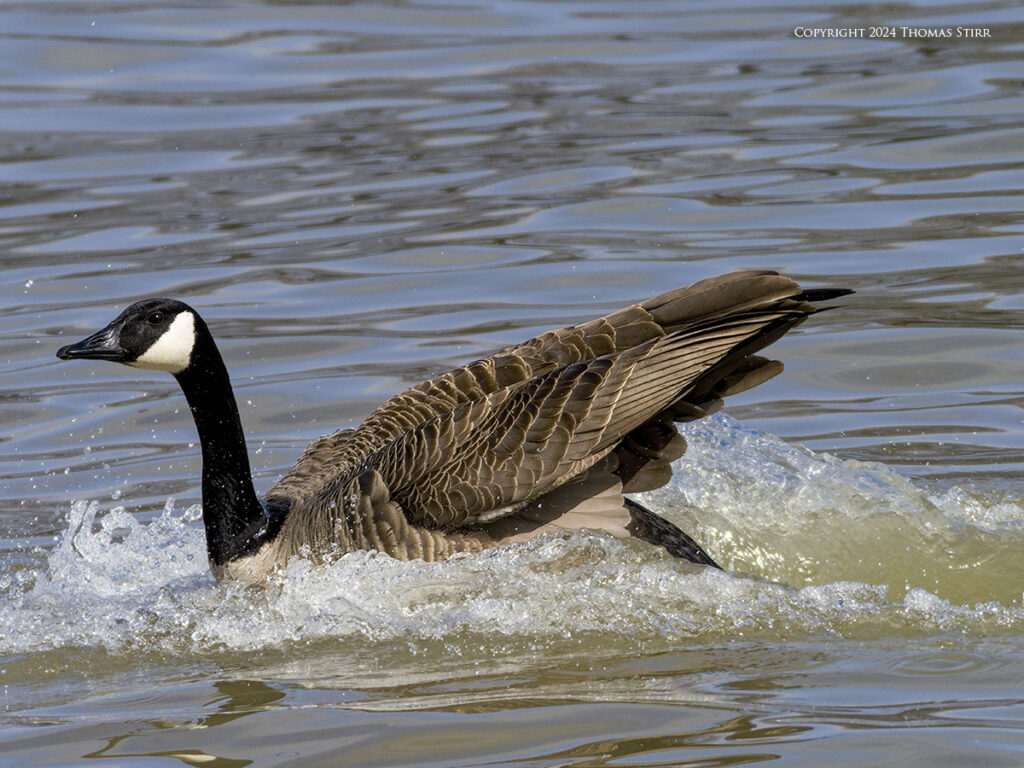
If the potential lens issues are going to be corrected automatically for me by my software anyway… then why should I waste my time reading/viewing lab tests? That makes absolutely no sense to me.

Viewing test images of standardized scenarios like photographing brick walls, or the same scene time and time again, bores me to tears. And, on a personal basis, I see no value in pixel peeping. So… if you want something more than just real-life images and commentary… then this review likely isn’t worth reading any further.

The intended audience for this M.Zuiko 150-600 hands-on review are folks who are genuinely looking for information on, or are currently using, M4/3 equipment… and have an interest in bird/nature photography.

I think it is very important to state upfront that this is not a photography review website. We only do reviews on camera gear that we actually own and use. I prefer to be out in the field experimenting extensively with my gear for at least a couple of months before doing a hands-on review on it.

Another thing to keep in mind is that I do not belong to any affiliate marketing programs. Nor do I have any official relationship with OM Digital Solutions. You won’t find any click through sales links. I don’t make a penny with click through sales commissions on any photography equipment that anyone may purchase.

The goal of this article is simply to share my experiences using the M.Zuiko 150-600 mm f/5-6.3 IS zoom lens. It is not to encourage anyone to buy anything.
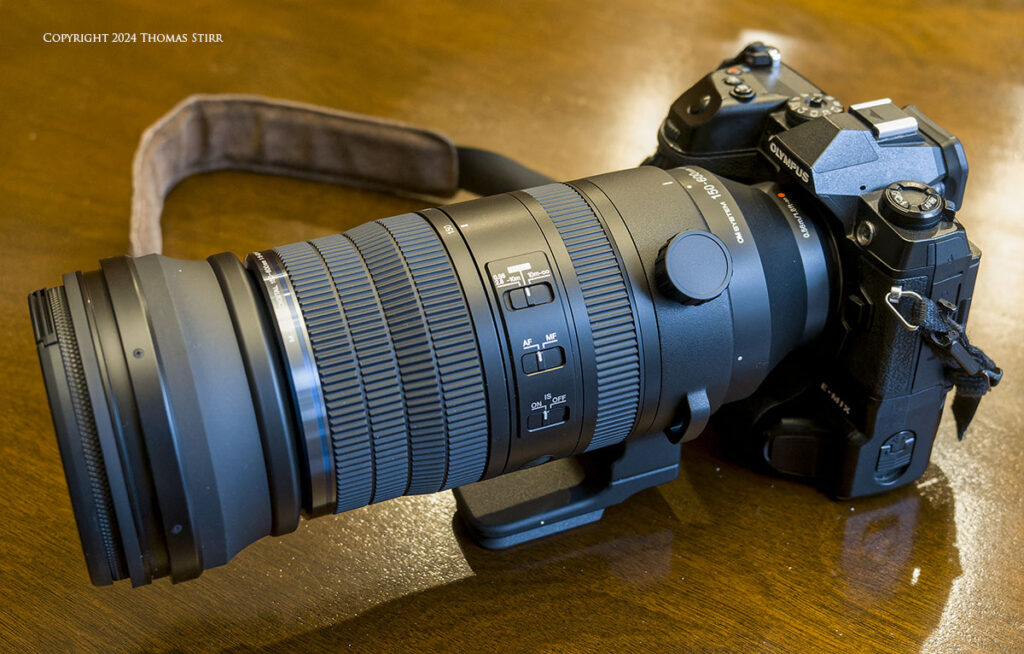
An unexpected product launch.
I suspect that the majority of photographers were taken by surprise with the launch of the M.Zuiko 150-600 mm f/5-6.3 IS super zoom lens. Few, if any of us, saw this telephoto zoom lens coming. In response to the product launch, a quick summary article that contained links to some of the initial reviews of this lens was published.

My initial response to the M.Zuiko 150-600 would be best described as a bit guarded. I was very intrigued with the photographic potential of this lens. This was counterbalanced by concerns that it would be too large, heavy and expensive for me to justify adding it to my kit. These concerns were felt by many other OM/Olympus photographers and were covered in a ‘decision’ article.

Taking flight with a new lens.
After doing some needs analysis and discussing things with my much better half, we decided to buy the M.Zuiko 150-600 mm f/5-6.3 IS. For us, it really came down to three main benefits: Sync-IS image stabilization, IPX1 weather sealing, and being able to put more pixels on subjects.

The compositional latitude provided by the extensive focal length range of the M.Zuiko 150-600 (efov 300-1200 mm), and the potentially improved handling due to the ‘push/pull’ zoom design, also factored into our decision.

Another important consideration was our previous experiences with Olympus products. Everything that my wife and I had purchased up to that point had exceeded our expectations. I saw no reason to think the M.Zuiko 150-600 would disappoint me.

Sync-IS Performance
The image stabilization of the M.Zuiko 150-600 is rated for 6 EV stops at the 150 mm end, and 5 EV stops at the 600 mm end. When used with a compatible OM/Olympus camera body the Sync-IS rating goes up by one additional EV stop, i.e. 7 EV stops on the 150 mm end, and 6 EV stops on 600 mm telephoto end.
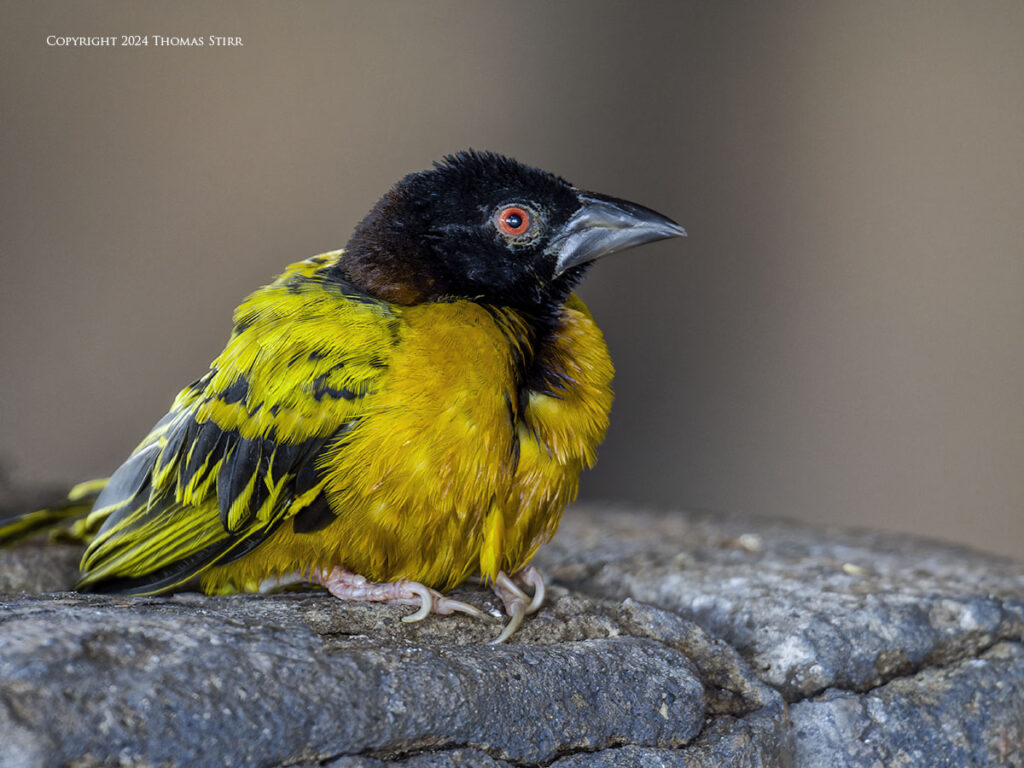
After doing some hands-on testing at Bird Kingdom in Niagara Falls I was able to demonstrate to myself that I could be successful on a consistent basis handholding at a 600 mm focal length (efov 1200 mm) using a shutter speed of 1/20. Thus achieving 6 EV stops of image stabilization. Not only that, with a bit of extra concentration I was able to have consistent success at 1/13 of a second when shooting handheld at 600 mm (efov 1200 mm).

I also did some testing on the 150 mm end and found that I could consistently shoot handheld successfully at a 1/2 second shutter speed, which equates to 7 EV stops of image stabilization. So, the Sync-IS ratings as published by OM System, are attainable in real-life.

Of course Sync-IS performance can be affected by the handholding skill and technique of individual photographers. And, when shooting at slower shutter speeds we need to have subjects that remain motionless during our image captures.

Recently I did a Handheld Hi Res (HHHR) test at the Niagara Butterfly Conservatory, finding that I could easily capture HHHR images of butterflies using shutter speeds of 1/100 to 1/160 of a second.


While these shutter speeds do not equate to 6 EV or 7 EV stops of image stabilization, they are still impressive. When using the Handheld Hi Res function, my E-M1X captures 16 successive images and then combines them in camera into a 50 MP RAW file. Obviously a camera/lens set-up needs excellent image stabilization for this technology to be successful.
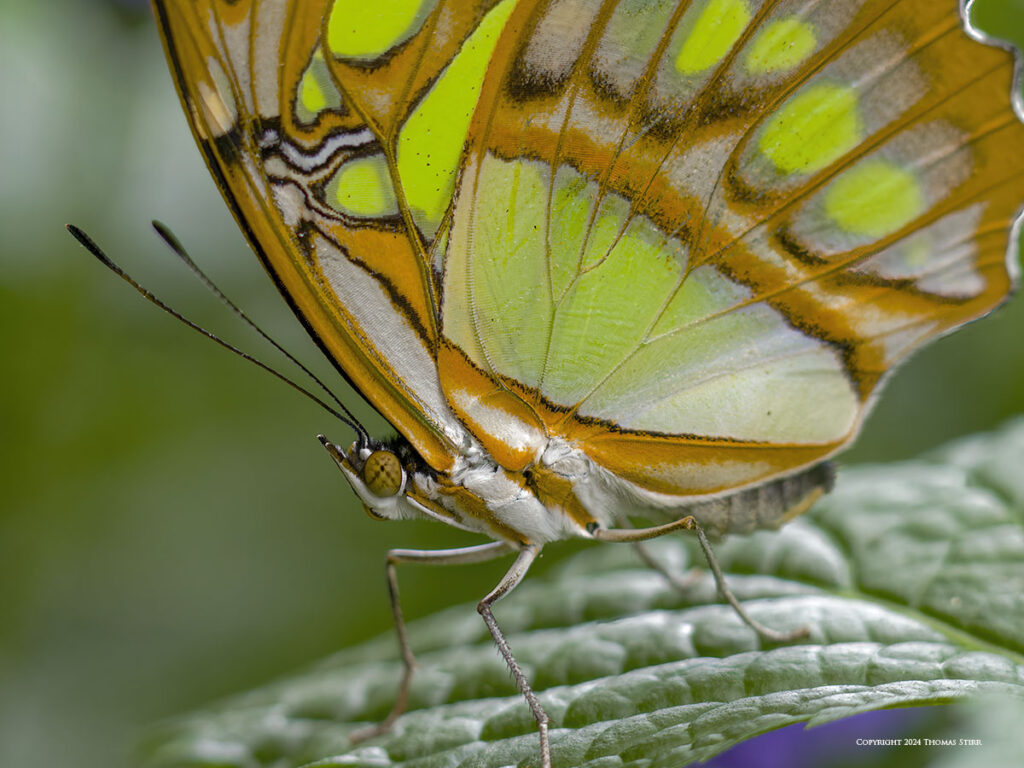
In-Field Flexibility
The focal length range of 150-600 mm (efov 300-1200 mm) coupled with excellent Sync-IS gives the M.Zuiko 150-600 terrific in-field flexibility. There are very few image opportunities that this lens will not be able to very competently handle. I’ve captured images of subjects that were less than 1 metre away… while others were over 125 metres away.

If a photographer has the Custom Modes on their OM/Olympus camera body programmed to quickly adapt to a range of shooting situations, the in-field flexibility expands further. When out with this lens in hand, a feeling of calm confidence ensues.

In addition, the minimum focusing distances of 0.56 metres (~1.84 feet) at 150 mm, and 2.8 metres (~9.2 feet) at 600 mm make the M.Zuiko 150-600 very versatile in the field. It is important to remember that the minimum focusing distances adjust at focal lengths in between the extremes noted. For example, I was 1.2 metres (~ 3.9 feet) away from the butterfly in the image above, which was captured using a focal length of 240 mm (efov 480 mm).

Being compatible with the MC-14 and MC-20 teleconverters also expands the shooting parameters of this lens. On a personal basis I found that the MC-14 was a more pragmatic choice than the MC-20 for birds-in-flight. In good light using the MC-14 delivers very good auto-focusing performance. Being able to shoot at 840 mm (efov 1680 mm) at f/9 adds a lot of reach with only one EV stop loss of light. This will be an acceptable trade-off for many photographers.

Using the MC-20 with the M.Zuiko 150-600 does cause a little bit of a lag with focus acquisition. Under low light conditions and shooting at higher ISO values like ISO-6400, the auto-focusing lag becomes more pronounced… but is still workable depending on the subject matter.

Trying to track with a flying bird with the M.Zuiko 150-600 fully extended with the MC-20 affixed, is very challenging due to the extreme focal length of 1200 mm (efov 2400 mm). I’ll likely avoid using the MC-20 for birds-in-flight.

On the other hand, I will not hesitate to use the MC-20 when photographing semi-static subjects like perched birds, or when I want to get in much closer with subjects, especially insects like butterflies, bees, wasps, and dragonflies.

I’ve found that the quick auto-focusing performance this lens provides, coupled with the ‘S’ mode push/pull zoom adjustment, makes the M.Zuiko 150-600 very well suited to fast breaking ‘turn and shoot’ photographic opportunities. For some of us this is at the heart of in-field flexibility.

It’s hard to count the number of times I’ve instinctively responded to movements around me and fired off some frames. Then been pleasantly surprized with how many ‘keepers’ I was able to get as a result. Ultimately when we invest money in a new lens the goal is to capture images we could not get with our current gear. The M.Zuiko 150-600 mm has more than earned its place in my camera bag as my preferred birding/nature zoom lens.
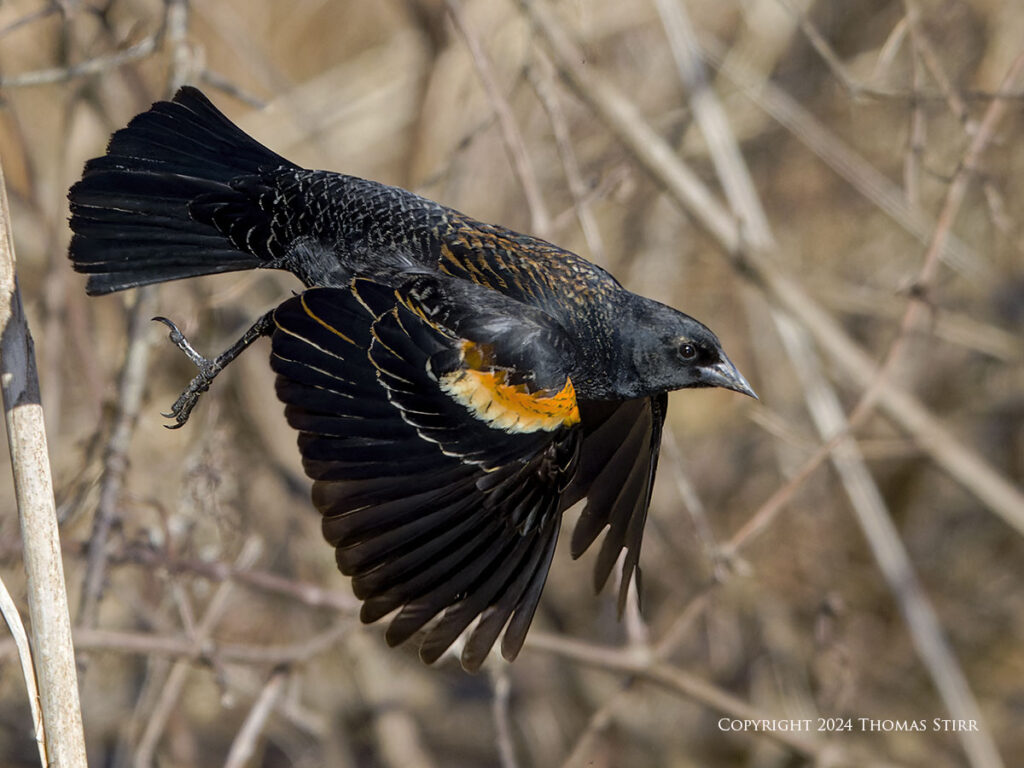
Image Quality.
As photographers each of us has our own approach to assessing image quality. As noted earlier, I’m not a pixel peeper and I don’t go over my images with a fine tooth comb to try to assess image quality by focusing on minute differences at the pixel level. For me, there is a much easier and more pragmatic way to assess image quality. That’s the time and effort it takes me in post processing to get my RAW files to where I want them to be as finished images.

On a comparative basis I spend far less time with my M.Zuiko 150-600 images than I did with my M.Zuiko 100-400 photographs. There are some standard steps that I consistently did with my 100-400 birding images that simply are not needed with photographs captured with the M.Zuiko 150-600.

Obviously it took some experimentation during the past couple of months to re-orient my approach in post processing. Simplification didn’t happen overnight… but my process in post has trimmed down to a reasonable degree.

For example, rather than having multiple DxO custom pre-sets for bird photography based on subject and lighting, I now have only one for my M.Zuiko 150-600 bird images. I regularly use only 4 standard sliders in PhotoShop CS6, rather than the 6 sliders I typically used with my M.Zuiko 100-400 files. And, I no longer have any need to use any elements in the Nik Collection.

I suppose the obvious question is “Why?” The answer is simple. My M.Zuiko 150-600 RAW files are sharper. The contrast is better, and the colours rendered are richer. Those three factors make post processing a breeze with my M.Zuiko 150-600 RAW files.
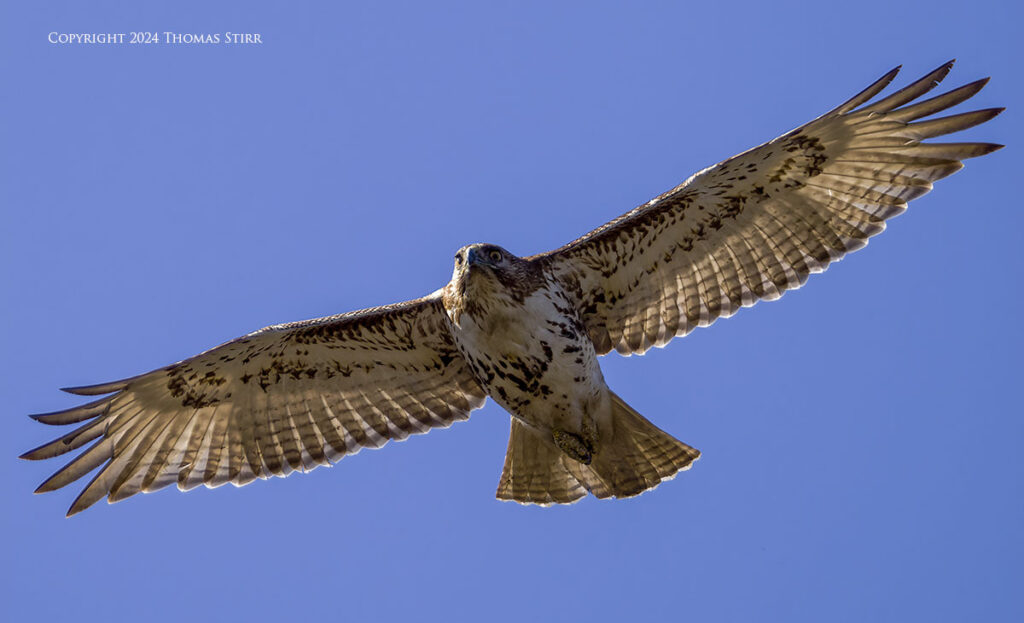
Size, Weight & Handling
Like many other people I had some initial concerns about the size and weight of the M.Zuiko 150-600 zoom. Back in my full frame days I had some experience shooting with a Nikon D800 and Tamron 150-600 mm f/5-6.3 zoom. That birding/nature set-up weighed 2950 grams (~6.5 lbs.). I did not have a grip for my D800.

I was able to continuously shoot with that combination for about 3 hours or so before some very noticeable fatigue would set in with my left arm. It would feel like limp spaghetti if I pushed it much beyond 3 hours. That was 9 years ago. Now, being a senior citizen for a number of years, I wondered if I could handle the size and weight of the M.Zuiko 150-600.

After investigating some options I acquired a Cotton Carrier G3 Harness and have used it extensively with the M.Zuiko 150-600. During lulls in the action I clip my E-M1X with the M.Zuiko 150-600 onto the harness, and it works like a charm.

I have quick access to my camera gear when needed, and the G3 Harness comfortably spreads the weight of my kit equally across my shoulders and back. Even after being out with my gear for 5-6 hour stretches I haven’t experienced any fatigue or pain whatsoever. My Cotton Carrier G3 Harness is an integral part of my birding kit.
My thanks to Ray Miller for capturing a photograph of the M.Zuiko 150-600 clipped onto my Cotton Carrier G3 Harness in the ‘at ready’ position.

As it turns out, my concerns about the size and weight of the M.Zuiko 150-600 were unfounded. I’ve been able to shoot with it non-stop for well over an hour at a time during extended 5-6 hour sessions, without any issues. I have no interest in, or need to use, a monopod or tripod with this lens. Nor do I have a need for any subject tracking assists like a red dot sight.

I find that the M.Zuiko 150-600 is very well balanced and handles wonderfully with my E-M1X. That may not be the case for other photographers of course. My set-up including the lens hood weighs 3,240 grams (~7.14 lbs.) so having an extremely comfortable camera body like the E-M1X is critical for me. I doubt that I could use the M.Zuiko 150-600 handheld with another camera body unless it had a comfortable add-on grip. And, even then it would really depend on the comfort attributes of a specific camera body.

I really love the ‘S’ zoom setting which allows for fast and smooth push/pull focal length adjustments. This helps make the handling of the M.Zuiko 150-600 a joy to experience. I find it much easier and faster to track with a bird-in-flight and adjust my focal length using the M.Zuiko 150-600, than with its smaller brother the M.Zuiko 100-400.

The barrel of the M.Zuiko 150-600 has four switches on it. Three on the left-hand side and one on the right. I only use the focus limiter switch on the left-hand side and would have preferred that it was placed in the middle position, rather than on the top of the cluster. I’ve never used the AF/MF or IS on/off switches on the left hand side, and likely never will.
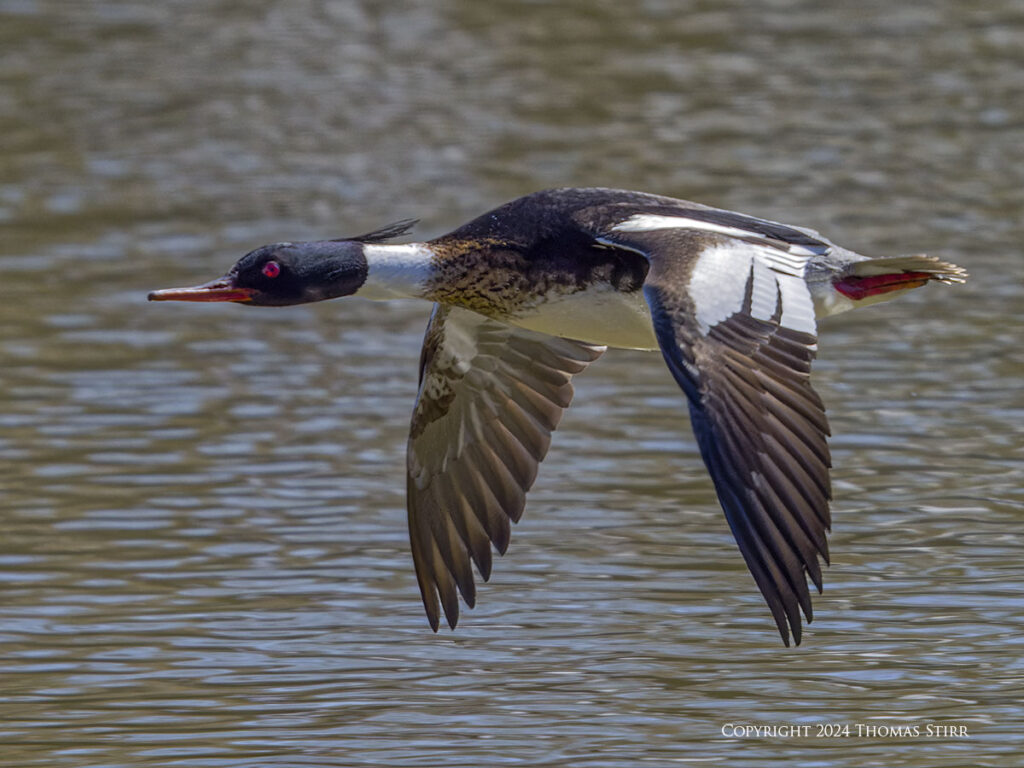
I suppose folks who use a tripod may feel differently than I do about the position of the switches. From a functional standpoint all four switches are easy enough to reach… with my thumb for the three left-hand switches… or my fingers wrapped under the lens barrel for the right-hand switch which controls the tightness setting for the zoom ring.

Contract Manufacturing
As noted in a previous article the concept of contract manufacturing is nothing new in the photography market. There are some folks taking umbrage over the possibility that the M.Zuiko 150-600 may be made by Sigma for OMDS. Some people claim that the Sigma Sport 150-600 for Sony is identical to the M.Zuiko 150-600 except for the brand name on the lens. And, that OMDS is ripping off buyers by having them pay a price premium for their lens.

Is it possible that there may be a contract manufacturing agreement between Sigma and OMDS? Absolutely. Since OMDS manufacturing is in Vietnam and Sigma’s is in Japan could it be very likely that the M.Zuiko 150-600 is made by Sigma for OMDS? Yup. Does that mean that the Sigma Sport 150-600 for Sony is identical to the M.Zuiko 150-600? Nope.
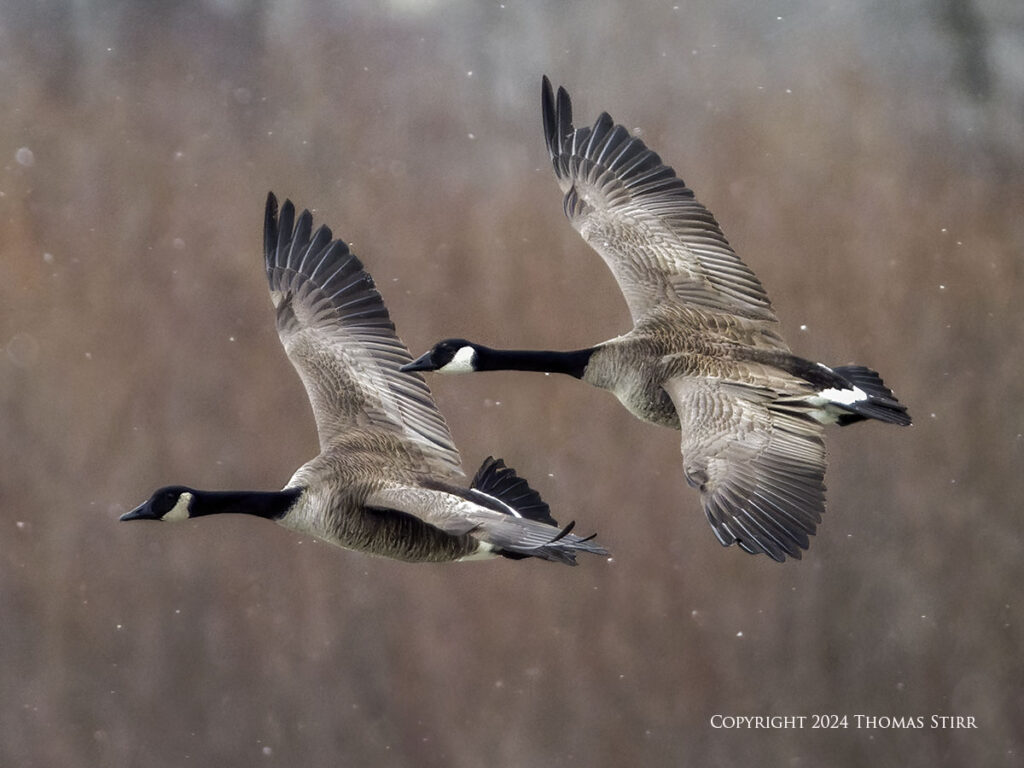
As outlined in my recent M.Zuiko 150-600 vs 100-400 comparison article in the “Internet Inaccuracies” section there are three published differences between the Sigma Sport 150-600 for Sony and the M.Zuiko 150-600. All you have to do is use the web links that are in the comparison article. You’ll discover a few important things.

- The M.Zuiko 150-600 has 13 special elements in its optical construction. These include 2 ED, 4 Super ED, 6 HR and 1 HD. The Sigma Sport 150-600 for Sony has 6 special elements consisting of 2 SLD glass and 4 FLD glass.
- The M.Zuiko 150-600 is certified to IPX1 standards. The Sigma Sport 150-600 for Sony is not.
- The M.Zuiko 150-600 provides 7 EV stops of Sync-IS at the 150 mm end, and 6 EV stops of Sync-IS on the 600 mm end. The Sigma Sport 150-600 for Sony provides 4 EV stops of image stabilization.
Specifications are subject to change of course… but at the time of the launch of the M.Zuiko 150-600 these three significant differences between these two lenses existed.

Is it logical to assume that it would cost more to produce a lens with 7 additional special elements, better weather sealing that is certified to IPX1 standards, and better image stabilization that provides additional EV stops of Sync-IS with compatible camera bodies? Absolutely.

If a product costs more to produce because of the additional features that it offers consumers, it is also logical that it will cost more to buy. Folks can make their own value assessment whether they want to invest in this lens or not.

If you are one of those folks who is upset about the price that is being asked by OMDS for the M.Zuiko 150-600 zoom… or you’re upset because it may be made by Sigma to OMDS specifications, there is a very simple solution. Don’t buy it.
The number of products out there that each of us have no interest in buying is infinite. Complaining about products that we have no interest in buying seems rather pointless and quite foolish.

The Emperor has no clothes.
The M.Zuiko 150-600 can be a challenging lens to use handheld given its focal length range, and overall size/weight. A fundamental element of success with this lens is good handholding technique.
I imagine there will be some people who buy this lens… and who may not have the requisite skills to shoot successfully with it handheld. The result will likely be some complaints from these folks that the M.Zuiko 150-600 isn’t sharp, or that the Sync-IS is overrated.

The reality is that if a photographer has some areas to improve with their own technique… or with their understanding of heat haze and atmospheric particulates… the M.Zuiko 150-600 will uncover those shortcomings very quickly. Thus revealing that the emperor has no clothes.
It is prudent for anyone considering this lens to anticipate that there will be a learning curve with the M.Zuiko 150-600. After a couple of months experimenting with this lens I know that I’ve only scratched the surface of its potential.

The Ultimate Question.
I suppose the ultimate question that needs to be asked is, “If you had it to do all over again… and you could go back in time with the experience you have now… would you still buy the M.Zuiko 150-600 mm f/5-6.3 IS zoom lens?”
My reply would be, “In a heart beat.”
Summary of other M.Zuiko 150-600 related articles (with links provided) on this website.
- HHHR Test with M.Zuiko 150-600
- M.Zuiko 150-600 with Digital Teleconverter Test
- M.Zuiko 150-600 vs 100-400 Comparison
- M.Zuiko 150-600 with MC-14
- M.Zuiko 150-600 with MC-20
- M.Zuiko 150-600 BIF First Impressions
- M.Zuiko 150-600 Focal Range Test
- M.Zuiko 150-600 Sync-IS
- New Nature Lens
- M.Zuiko 150-600 Decision
- M.Zuiko 150-600 Launched
- Contract Manufacturing Realities
Technical Note:
Photographs were captured handheld with the camera equipment noted in the EXIF data. All images were created from RAW files (except image 52 which was created from an out-of-camera jpeg) using my standard process. This is the 1,377 article published on this website since its original inception in 2015.

How you can help keep this site advertising free
My intent is to keep this photography blog advertising free. If you enjoyed this article and/or my website and would like to support my work, you can purchase an eBook, or make a donation through PayPal. Both are most appreciated.
Sometimes all we need as photographers is a bit of inspiration. We hope you can find some of that inside Finding Visual Expression II.
Finding Visual Expression II is available for download for an investment of $11.99 CDN. The best viewing experience of this eBook will be at 100% using Adobe Acrobat Reader.
You may be interested in all of the 30 concepts covered in both of these related eBooks. If so, you may want to also consider Finding Visual Expression.
Finding Visual Expression is available for download for an investment of $11.99 Cdn. The best viewing experience of this eBook will be at 100% using Adobe Acrobat Reader.
Our other eBooks include Images of Ireland, New Zealand Tip-to-Tip, Nikon 1: The Little Camera That Could, Desert & Mountain Memories, Images of Greece, Nova Scotia Photography Tour, and a business leadership parable… Balancing Eggs.
If you click on the Donate button below you will find that there are three donation options: $7.50, $10.00 and $20.00. All are in Canadian funds. Plus, you can choose a different amount if you want. You can also increase your donation amount to help offset our costs associated with accepting your donation through PayPal. An ongoing, monthly contribution to support our work can also be done through the PayPal Donate button below.
You can make your donation through your PayPal account, or by using a number of credit card options.
Word of mouth is the best form of endorsement. If you like our website please let your friends and associates know about our work. Linking to this site or to specific articles is allowed with proper acknowledgement. Reproducing articles, or any of the images contained in them, on another website or in any social media posting is a Copyright infringement.
Article and images are Copyright 2024 Thomas Stirr. All rights reserved. No use, duplication or adaptation of any kind is allowed without written consent. If you see this article reproduced anywhere else it is an unauthorized and illegal use. Posting comments on offending websites and calling out individuals who steal intellectual property is always appreciated!

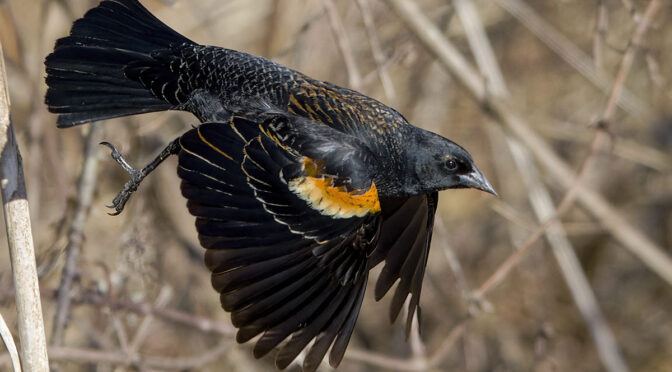


Hi Thomas. Just got mine. On the camera (OM-1) there’s an “Lens IS priority” setting. What do you recommend when using the 150-600? Thanks.
Hi Ludovic,
I have mine set to “On”.
Tom
Thanks for this informative review., and for the wealth of helpful information and stunning photographs on your blog.
I have been using MFT gear for about 4 years now, having switched from Nikon FF. For birding I use the best lens I have ever owned in 50 years of photography, the Zuiko 300mm f4. I must admit that when the 150-600 zoom came out I was skeptical – I had used the Tamron 150-600 (2 versions of it) for several years and the size and weight of it was one of my reasons for switching to Olympus. But your article, and the excellent results you have got with this lens has got me rethinking, and that extraordinary reach is pretty tempting.
I do have one outstanding question though: with my Tamron, and with similar Sigma lenses, the push/pull zooming created a problem with sensor dust on my Nikon gear. Every time I zoomed meant that a litre or more of air was being shoved back into the camera, straight over the exposed sensor. I needed to clean my sensor, on average, every 2 or 3 months. In 4 years I have never had to do that for my OM-1.
Is this an issue for you?
Hi Kelvin,
We’ve been shooting with Olympus (now OM) for 6 years and have never had to clean any of the sensors in our cameras. Our cameras (E-M1X and E-M1 Mark III), like the OM bodies, use a Supersonic Wave Filter that shakes any potential dust off the sensor every time the camera is turned on. According to the OMDS website the M.Zuiko 150-600 mm zoom is “dust, splash & freezeproof”. After capturing over 100,000 images with my copy of this lens I’ve not had any issues with dust or weatherproofing.
Back in my full frame Nikon days I also shot with a Tamron 150-600. I never used a ‘push/pull’ action with that lens as my understanding is that the lens was not designed for use of that kind. Focal length adjustments were made using the standard ring twist… so I did not experience any dust issues with my D800 when using the Tamron lens.
Hope this has helped.
Tom
Hi Tom great review and seems like a great lens to have but question
Since I already have the M.Zuiko 150-400 it would probably be foolish to sell it and buy the 150-600?
Hi Chris,
I’ve never shot with the M.Zuiko PRO 150-400 so I can’t provide any insights. This ‘first impressions’ article by Petr Bambousek may be helpful for you: https://www.sulasula.com/en/om-system-150-600mm-first-impressions/. I’ve followed Petr’s work for a number of years. He is one of the finest wildlife photographers in the world today, having won numerous awards during his career.
Tom
Hi Chris,
I forgot to mention the C-AF difference between the M.Zuiko PRO 150-400 and the M.Zuiko 150-600. The new 150-600 has a different focusing motor than is in the PRO 150-400. This limits the 150-600 to a maximum C-AF frame rate of 25 fps… while the PRO 150-400 can shoot up to 50 fps using C-AF. Depending on the camera body you are using this may be an important difference.
Tom
Thank you for an excellent review of this lens. You gave a diverse group of subjects with all of your data. I especially like that you included the distance of each subject. Many individuals doing reviews leave that piece of information out, I find it absolutely necessary when reading one’s reviews with their photographs and determining how far the photographer is from the subject.
I have recently rented this lens for trial before i decide to purchase it.
Hi Lyle,
I’m glad the review was helpful for you. The distance to subject measurements are usually included with my EXIF data if the estimates from my cameras appear realistic.
Tom
Hi Thomas
Thank you for this excellent article. Finally an in-depth review from someone other the so called OM ambassadors. I’ve just ordered the 150-600mm from Amazon and excited to get hold of it. Initially I will be using it on the OM-1 but I’m in the process of upgrading to the OM-1 mark ii for bird and wildlife and using the OM-1 for macro.
Thank you
Hi Keith,
I’m glad the article was helpful for you. I’ve found the M.Zuiko 150-600 to be a wonderful lens that has significantly extended my photographic potential.
Tom
I recently purchased the 150-600 (in large part on the basis of your article) and perhaps you might find some of this useful.
https://www.dpreview.com/forums/thread/4788340
https://www.dpreview.com/forums/thread/4788337
Sherman Levine
Hi Sherman,
I hope you have been enjoying your new lens.
Tom
Tom,
Thank you. Having a blast. It’s an incredibly nice lens to work with.
These are posted at 100% with cropping as needed
https://www.flickr.com/photos/32989985@N07/albums/72177720322834518
Sherm
Hi Sherman,
Super to learn that you are having a great time using the 150-600 IS zoom!
Tom
Hi Thomas,
Thank you publishing your article on The M.Zuiko 150-600mm lens. I have just bought one. Could I ask a couple of questions?
1. I have found that the lens is quite soft at wide apertures before any processing. Did you see this too? However, processing in Topaz Photo AI does bring the detail out.
2. Are you able to comment on Topaz Photo AI compared to DxO Photolab.
I shall get the free trial from DxO to see if it is any better.
Your comments would be very welcome.
Thank you
Phil
Hi Phil,
I have not found any issues with the M.Zuiko 150-600 mm f/5-6.3 IS in terms of sharpness at wide apertures, and I’ve been pleased with the performance of the lens when fully extended to 600 mm. I’ve never used Topaz Photo AI so I am unable to make any comments about that software program.
I used DxO PhotoLab 7 as my initial RAW processor and use the automatic lens corrections it provides for all of my photographs… as well as a few other adjustments depending on the needs of a specific image. I use the DxO Smart Lighting Spot Weighted tool for all of my images, regardless of subject matter. I find this helps to squeeze out a bit more dynamic range from my files. I also use DxO Microcontrast with my nature/bird images. In terms of handling potential noise I use the DEEPprime function with DxO for all of my images… with a maximum value of 15… then use Topaz Noise AI or Topaz Sharpen AI if needed. I find the ‘double bump’ with noise reduction using a combination of DxO DEEPprime and Topaz Denoise AI can be very effective.
Hope this has helped.
Tom
Thank you Tom, that is very helpful. I shall trial DxO shortly.
Best regards
Phil
Hi Phil,
DxO usually offers potential customers a trial version of the software so they can try it out before purchasing. This may be a good route to go, just to make sure you like the DxO product.
Tom
This is the first from you that I have read. I have the 300f4 pro with both convertors and I have the PL 100-400mm which I hate using because of the terrible zoom action. But I do at times like a zoom and I have thought about the Oly 100-400mm for the comfortable zoom action. It seems like the 150-600 may be a better option. I already use a BlackRapid sling so I could probably cope with the weight but I am reluctant to give up the sharpness of the 300 pro. Your comment that the 150-600 is sharper than the 300 plus 2x was very useful. You have royally cost me this month’s pocket money!
Ken C in Somerset UK
Hi Ken,
My article does not reference the M.Zuiko PRO 300 mm f/4 IS in any way as I’ve never used that particular lens to capture even a single photograph.
My image quality comments are in comparison with the M.Zuiko 100-400, which is a lens that I also own and have used extensively.
Some of my articles have been misquoted on the internet… and from time to time comments are attributed to me that I never made. Perhaps it was in a chatroom, or in a different M.Zuiko 150-600 article, that you read some statement that the M.Zuiko 150-600 is sharper than the M.Zuiko 300 mm with MC-20. I never made that statement in this article, or at any other time.
Tom
Dear Mr Thomas
I read your blog for a few years now. with the occasional comment, about your photos or your “ideas/opinions/philosophy”.
Recently I’ve upgraded from a Canon 20D to a (big bargain at a local shop) Lumix G80/85. After a couple of weeks, 1st thing that came to my mind was something you wrote some time ago and it goes somewhere along these lines: – More than sensor size is the age of the sensor/technologies in the camera and lenses that count-
I am re-learning all about m4/3 photography and it’s great. I’m looking to choose a consumer telephoto lens for the system for my kid’s field sports.
My question for you. – If I understand correctly what you’ve written about the 100-400mm and 150-600mm experience for isolating some subjects is better to get a longer field of view than a wider aperture lens?
Thank you in advance for your time
Hi Antonio,
The shorter the focal length… the deeper the depth of field will be compared to a longer focal length shot at the same aperture with the same distance to subject. Something that you could do is go to any of the depth-of-field calculator websites (there are a number of them). Choose the sensor size of your camera, then play around with various subject distances, apertures and focal lengths. You’ll be able to see in real time what happens to depth-of-field.
Tom
Thank you, that’s a good idea!
I am now on day 3 with this lens (renting not owned). I love it. It performs better than my 100-400 in every way. My first impression was “wow, this feels a bit heavy”. But now on day 3, I don’t notice it at all. I just might be selling my 100-400 and a few other items to offset the price of this lens. Thanks for all the recent posts on the 150-600, very informative and useful.
Hi Mladen,
It sounds like your hands-on testing with a rental lens is going well. I’m glad that the various articles were helpful for you.
Tom
Thank you sir for a post I did NOT need to see. I’m saving my pennies for this lens. Unfortunately I spent some of those pennies on the 100-400, which I am learning to use but …
ThomasEisl.photography on YouTube did a fine review of this lens.
Cheers!
Hi Randy,
Hmmmm… I suppose you could try crossing your arms… closing your eyes and concentrating… then snapping your fingers to see if the memory of reading the post disappears from memory.
Tom
Thomas, Thanks again for this perfect roundup of your previous articles – I enjoyed each of them. I believe they are the only trustful and balanced sources on this lens so far to be found on the web. Reaching from the loyal ambassadors to the critics who project their general dissatisfaction with OMDS politcs onto the product or owners of the holy 300 f/4 w MC-20 who fear a more versatile competitor. My experiences are pretty similar to yours (but in a much less professional way) and I am glad I made this step. It was clearly forward for my way of shooting.
Regarding the carrying situation: I am quite happy with my current setup, which consists of a Black Rapid sling with a QD-adapter swivel attatched. On the lens I replaced the original foot by a longer one from Leofoto. This foot is fitted for the Sigma 150-600 and longer to grab including Arca Swiss. Additionally it features a QD mount. It is really comfortable to use .
Hi Wolfgang,
Thank you for sharing your experiences with the M.Zuiko 150-600.
I find it quite odd how some folks seem to love to hate Olympus… and now OMDS. I think the philosophy of the company has led to a lot of innovative technology and truly differentiated products. Photographers seem to either ‘get’ the brand or not. My E-M1X remains a camera that is subject to constant criticism… even 5 years after it was introduced. From my perspective it is the best camera that I’ve ever owned and I have no plans to change to something else.
No doubt the M.Zuiko PRO 300 mm f/4 IS is an outstanding lens… but is one that I would never consider buying. Quite simply I hate using prime lenses as I find them restrictive for my style of shooting. Comparing the 150-600 with the 300 is like comparing a drill with a jig saw… they are very different tools designed for different jobs… and the comparison is meaningless.
I’m glad that you enjoyed the series of articles that I created for the M.Zuiko 150-600 and that you found them helpful.
Tom
Wolfgang, Thx for the tip on the Leofoto foot. It greatly improves the carrying (grab) of the lens plus the versatility you mention. Improved overall experience. Cheers. 🙂
Very good write-up about the 150-600mm lens. Although I doubt I’ll ever buy the lens, it’s a very interesting product. As I’ve written elsewhere, I couldn’t care less if it’s made by Sigma (apparently the 100-400mm is as well) as long as it does what I want it to do. Critics of the lens seem to ignore the differences between this lens and the other 150-600mm made by Sigma.
Thanks Woody… I’m glad you enjoyed the article. I agree that critics seem to have ‘SSS’… selective specification syndrome. They only focus on similarities, not differences.
Tom
Agree on the weight of the lens, don’t want to stress the camera connection. I put one of my Olympus Pro straps on the 150-600 using the Peak Design Anchor links. That way I can swap around the strap I’m using. Also can take the strap off when I put the lens in my travel carrycase.
By the way, I got a really decent price on the lens from Cardinal Camera. I’ve bought from them several times and found them to be very trustworthy.
Great article. I have my 150-600 sitting behind me on my E-M1X body and am learning how to use it before my next field trip. I have switched to the OM-1 for my basic cameras for travel. I found that the HDL-10 grip on the OM-1 provides exactly the same feel at the E-M1X. I noted that you have the strap mounted on the 150-600 lens, I’m still playing around with how to use that strap when I don’t want to wear a special carrier. Thinking maybe around the shoulder instead of just on the neck. Anyway, I am finding the images from the lens to be superior, and I agree that the MC-20 is a little overkill in most situations.
Hi Reno,
Given the weight of the lens I would certainly recommend putting the strap on the lens utilizing the strap brackets built in on the lens. I store my 150-600 in an old Tenba medium sized shoulder bag. It fits the 150-600 with an E-M1X attached perfectly when all of the dividers are removed. I suppose I could use that bag to carry the camera/lens around in if I didn’t want to use the Cotton Carrier for some reason.
Tom